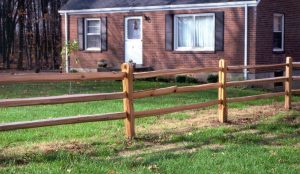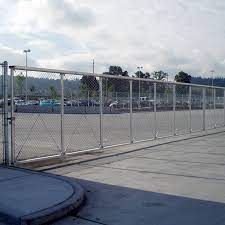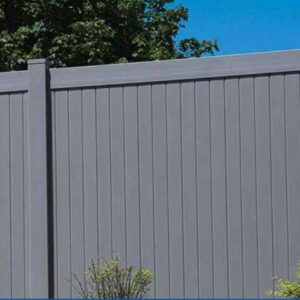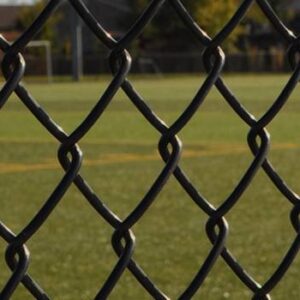Free shipping
Best online shop 2022
Free returns
Best price guarantee
Cattle Fences

Recommended
- 4 to 5 strand Barb Wire fences
- Woven Wire fences with 1 or more barb wire strands above the Woven Wire
- Wire Panel fences
- Heavyweight and Extra-Heavyweight wire
- Clearly visible fences
- Minimum fence height: 60”
Horse Fences

Recommended
- Square Knot Woven Wire horse fences with less than 4″ openings
- Heavyweight and Extra-Heavyweight wire
- Clearly visible fences
- Minimum fence height: 48”
Not Recommended
- Barb Wire fences
- High-Tensile Wire fences
Sheep and Goat Fences
Recommended
- Woven Wire fences for non-horned sheep and goats
- Mesh Wire fences for non-horned sheep and goats
- Heavyweight and Extra-Heavyweight wire
- Minimum fence height: 39”
Not Recommended
- Barb Wire fences
- Temporary fencing
Hog Fences
Recommended
- Woven Wire fences with 1 or more barb wire strands along the ground
- Small openings between the woven wires
- Fences built close to the ground
- Medium and Heavyweight wire
- Maximum fence height: 54”
Not Recommended
- Barb Wire fences
- Cable fences
_____
Wire Basics
Wire Types
HIGH TENSILE – With approximately 0.28% carbon content, high tensile wire is significantly stronger and longer lasting than low carbon wire.
LOW CARBON – Low Carbon wire is made from steel rod of approximately 0.10% carbon content. This wire is easy to work with and fairly forgiving.
Products that are not labeled as High Tensile use Low Carbon wire.
Wire Finishes
Class 3
- 0.80 oz. of zinc/ft2
- Meets or exceeds ASTM A 121, A 116, and A 641
- More than 2.5 times thicker than Class 1 coating
Class 1
- 0.28 oz. of zinc/ft2
- Most commonly used on low carbon wire
Commercial
- Zinc coating with no minimum ASTM coating weight
- Commonly used on welded wires, poultry netting, and hardware cloth.
- Lowest grade
Barb Wire and Electric Wire
Electric Wire
- Consists of one strand of galvanized, smooth, conductive wire
Barb Wire

- Consists of two strands of galvanized wire twisted together with barbs evenly spaced.
- Comes in 2 point barbs or 4 point barbs
Barbless Wire
- Consists of two strands of galvanized wire twisted together

Woven Wire
Sample woven wire description and explanation:

Knot Types for Woven Wire
Fixed Knot
- The Fixed Knot securily ties the vertical say wire with the horizontal wire not allowing movement.
- The Fixed Knot uses solid vertical stay wires to allow for increased post spacing.
- The knot cannot come apart under pressure, making it highly resistant to impact.
- Uniform crimps keep the hinge knot fence tight under strain.
Square Knot
- Square Knot woven wire has extra vertical strength to withstand heavy impact.
- The knot construction is smooth to prevent snags and cuts.
Hinge Knot
- The Hinge Knot stretches and gives, allowing it to absorb animal impact without damage.
- Uniform crimps keep the hinge knot fence tight under strain.
______
Welded Wire
Sample woven wire description and explanation:

Western Red Cedar Split Rail
- Natural Beauty
- Strength
- Longevity
- Stainability
- Best Choice for countryside fencing
Western Red Cedar split rail fence is one of the most cost effective styles for defining boundaries, decorating property, and fencing in livestock and horses. Split rail fencing is also one of, if not the easiest style of fence to install making it an ideal project for the DIYer.
Split Rail posts are available in either 2-rail (approx. 36″ high) or 3-rail (approx. 48″ high) designs. Posts are also available in different angles, in-line (rail holes on either side), corner (rail holes at 90 degree angle) and end post (rail holes on one side only). All posts used in this fence system are the same Jumbo grade materials. The differing factor are the Rails, which are available in Pony, Standard, and Jumbo Grades. This refers primarily to the rail girth, measurement around the fence rail. The hole and tenon dimensions are the same on all components of our cedar split fencing, so they’re universal in the sense that any post and any rail will fit together.
Advantages – Posts are typically set directly in the ground approx. 30″ deep without any concrete. A tamping bar is used to compact the dirt around the post while backfilling. Pouring gravel around the posts instead of backfilling with dirt will help prevent posts from leaning under the heavy weight of the rails and will also help with proper drainage of water away from the posts.
Disadvantages – It is typical to have to retamp posts plumb after the ground settles around post so that the fence remains upright. This is especially true if the fence is installed in a wet area or it was wet when the fence was originally installed. Fence requires a preservative for the longest-lasting performance.
Western Red Cedar Split Rail Fence is a style of fence that is component driven. Most wood fence styles utilize fence panels, but this rustic style is made up of posts and individual rails. This fence is readily available in 2-Rail and 3-Rail styles (4-Rail is available by special order).
A complete section of 2-Rail fence would include (2) Posts, and (2) Rails of your choice. A 3-Rail fence section would include (2) Posts and (3) Rails of your choice.
West Virginia Split Rail
Best Choice for Split Rail in the Northeast
- Historical Fence
- Strength
- Longevity
- Low cost perimeter fence
Types of West Virginia Split Rail
- Locust
- Southern Yellow Pine
- Lap Rail
Locust
The locust fence post was first put into commission by the early Appalachian settlers because of its superb strength and unsurpassed resistance to decay. This classic fence has been used for generations in the wild Appalachians and today lends itself to the rustic appeal of the home and farm landscape.
Produced with the same meticulous care as the hand-split rail fences of the pioneers, this fence creates an aura of quaint charm in any landscape setting.
Southern Yellow Pine
From rustic Appalachia comes a split rail fence like no other. Skilled craftsmen draw out the strength and beauty of our split rail, with the same eye to quality as the early settlers of West Virginia. These trees are ideally suited to this application. Used for many years in West Virginia Split Rail™, Southern Yellow Pine has proven to be an excellent post material. Because the specie is highly receptive to the treating process it makes an ideal pressure treated split rail post. To increase their longevity the posts are pressure treated to ground contact retention. The rails are treated to above ground retention. The pressure treating process forces the preservatives into the wood fibers changing the characteristics of the wood so that it is highly resistant to attack of rot, decay and insects. The treatment leaves no odor or residue, just natural wood grain beauty with a light green hue. This product carries a lifetime warranty from the manufacturer, WVSR™.
Lap Rail
Often called ‘split rail fence’, West Virginia Lap Rail is not truly split when made; it is cut at a sawmill. One side of the Spruce or Hemlock rail is often ‘half-round’ while the other side shows where the rail was put through a saw. Typically the half-round side is faced out and the cut-side in. WV lap rail utilizes Locust posts. These posts are also run through a sawmill; the inside and outside of the post is often cut and the sides may be cut or be a natural half-round. WV lap rail fence is very rustic in appearance. Each rail and post come in a slightly different size and shape. WV lap rail is available in a two rail (approx. 36″ high) and a three rail (approx. 48″ high) style. Rails are 11′ long and overlap through the posts to make 10″-3″ to 10′-6″ post centers.
Advantages – WV lap rail fence is one of the most cost effective styles for defining boundaries, decorating property, and fencing in livestock and horses. Lap rail fencing is also one of, if not the easiest style of fence to install making it an ideal project for the DIYer. Posts are typically set directly in the ground approx. 24-30″ deep without any concrete. A tamping bar is used to compact the dirt around the post while backfilling.






